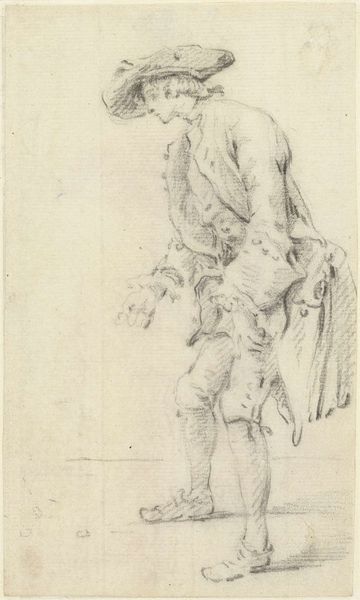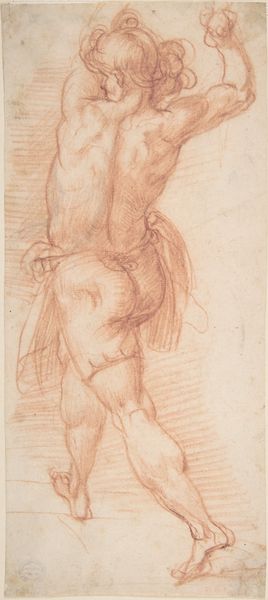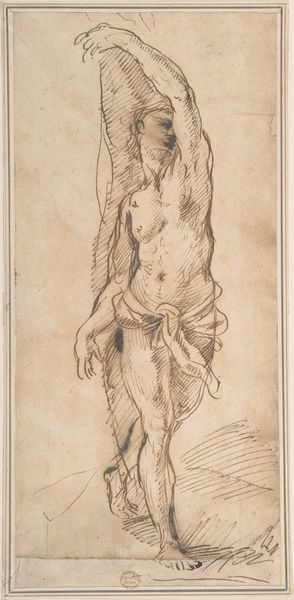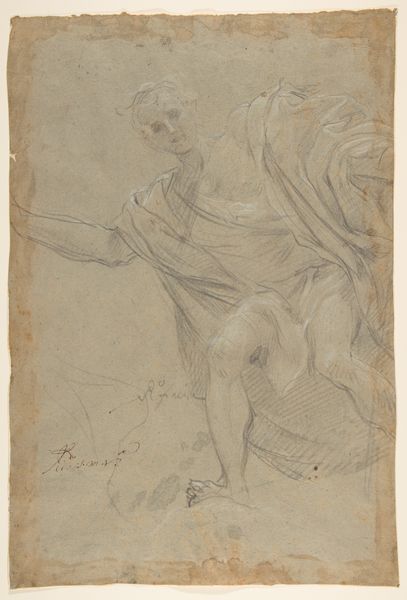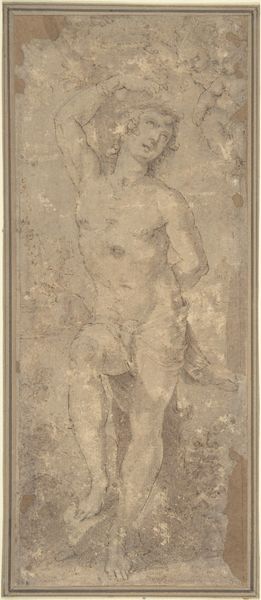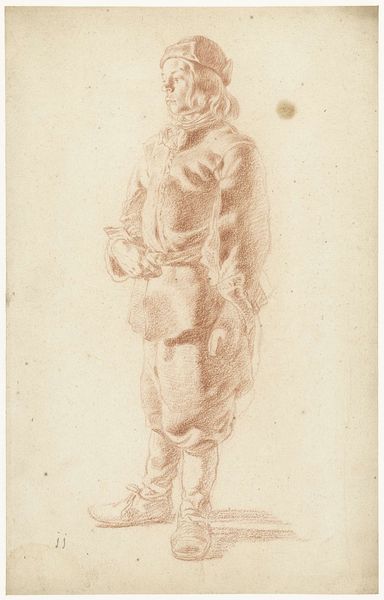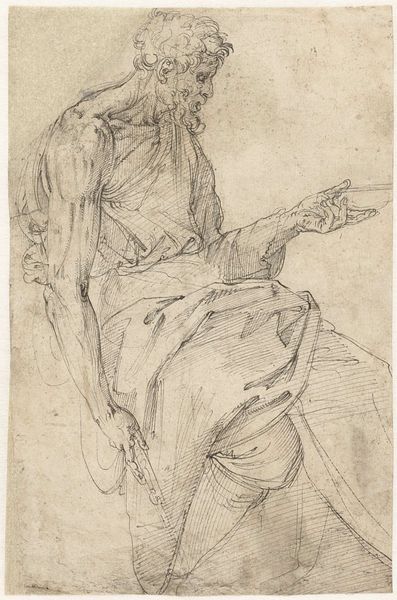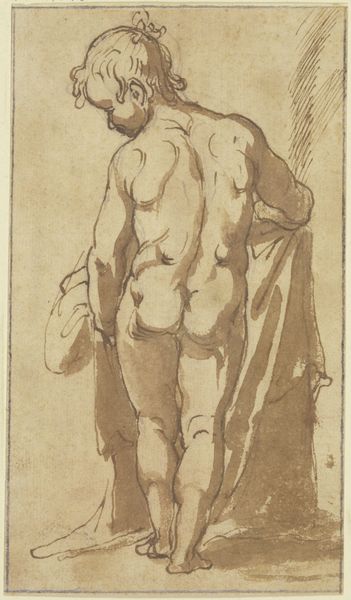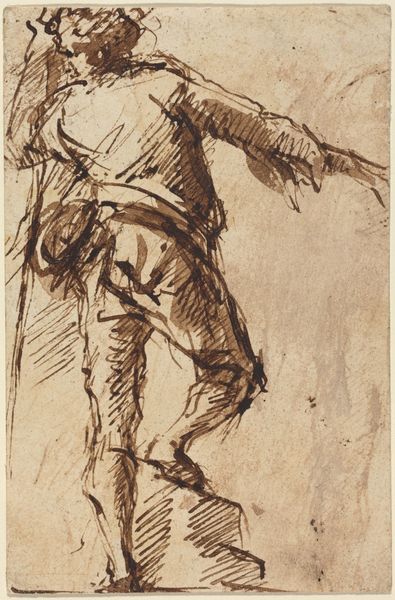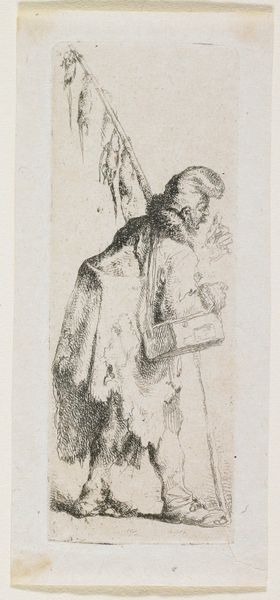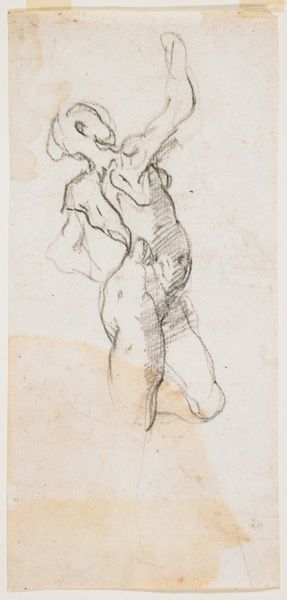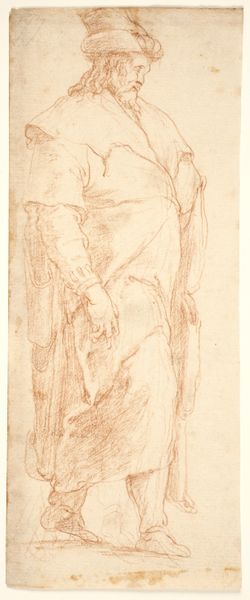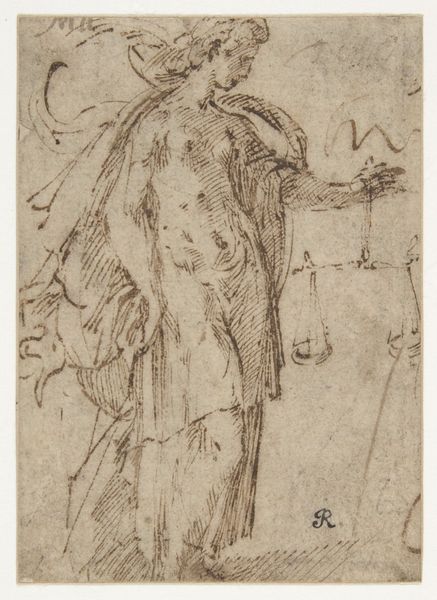
drawing, ink
#
portrait
#
drawing
#
baroque
#
charcoal drawing
#
figuration
#
ink
Dimensions: 6-7/8 x 4 in. (17.5 x 10.2 cm)
Copyright: Public Domain
Editor: So, here we have “Standing Figure of a Man (Fisherman?)”, an ink and charcoal drawing dating from the 1600s. It's currently housed at the Met. There's a raw energy about it. What do you see in this piece? Curator: I see the persistence of archetypes. Doesn't this figure echo images of laborers or even mythical heroes passed down through centuries of visual culture? The drawing evokes a kind of collective memory. He could be a fisherman, yes, but consider also the symbolic weight of water and its connection to life, to creation. Notice the tool slung over his shoulder, the net hanging in his left hand. Are these just tools, or symbols of provision and labor that resonate across generations? Editor: That's interesting! I hadn’t thought about the symbolic weight of his tools, or how it fits into this longer artistic lineage. Is that something Baroque artists were conscious of, this revisiting and reimagining of older figures? Curator: Absolutely! The Baroque, while innovative, often drew upon classical forms and narratives, charging them with new emotional intensity. This figure, with his somewhat rugged appearance, feels both grounded and monumental, connecting to artistic traditions while expressing something fundamentally human about the act of working, providing, surviving. Editor: So, the artwork invites us to look beyond the literal representation and consider broader cultural narratives? Curator: Precisely. Think about how the anonymous artist uses shadow and line. Does it communicate an idea? Editor: I see, the marks certainly adds to a feel of being handmade and adds value by way of association. Thank you, this gives a wider scope on viewing art, how symbols live with time and have new meaning based on past meanings.
Comments
No comments
Be the first to comment and join the conversation on the ultimate creative platform.
